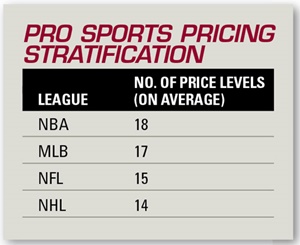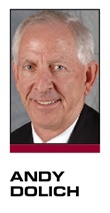In a New York Times article last year, Harvard professor and author Michael J. Sandel was asked what he would do if he were president of the United States. His answer:
“I would lead a campaign against the skyboxification of American life. Not long ago, the ballpark was a place where C.E.O.’s and mailroom clerks sat side by side, and everyone got wet when it rained. Today, most stadiums have skyboxes, which cosset the privileged in air-conditioned suites far removed from the crowd below. Something similar has happened throughout our society. The affluent retreat from public schools, the military and other public institutions, leaving fewer and fewer class-mixing places. Rich and poor increasingly live separate lives.”
Sandel’s viewpoint is a bit simplistic in today’s hyper-revenue-generating world of sports. However, the financial stratification of venue seating areas is changing the dynamic of how fans consume the on-field exploits of their sports heroes. The creation of differentiated layers of fans’ experiential involvement underscores that the days of one-size-fits-all sports venues are over.
 |
Once upon a time, a kid could wander down on the court or near the dugout and talk to the players. Now, in many venues, especially in the NFL, fans have to pay a hefty license just to buy a season ticket. Fans need the skills of SEAL Team Six to access the varied economic neighborhoods in many stadiums. Up close and personal is reserved for Twitter, Facebook, YouTube and other forms of instant social media. Dynamic pricing and secondary ticket marketing has changed the micro neighborhoods that had existed in many stadiums. Families, friends and perfect strangers grew up going to games and treating each other with respect. Every section was a family section, not one mandated for security reasons.
When I attended the first NFL preseason game at Cowboys Stadium in 2009, I was amazed at how my eyes were hypnotically drawn to the Texas-sized high-definition video board no matter where I was positioned. It was a potent preview of how games will be consumed in live settings in the future.
Up until 2005, the San Francisco 49ers had one price — $65 — for all seats at Candlestick Park. As part of the new 49ers stadium that will be built in Santa Clara, all fans will have to purchase stadium builder licenses. Nine thousand or so seats between the 25-yard lines will carry a license fee between $20,000 and $30,000 per seat with an average ticket price of $300. Club seats will sell for $80,000 each. If you want to purchase one of the 165 suites, you’ll have to write a check of between $200,000 and $500,000 a season.
Ticket revenue will remain a critical component of team revenue, even in the expanding worlds of traditional, new and social media. The automotive industry has done an excellent job of displaying all of its products — from the starter car to the “look-at-me machine” that advertises how well you have done. Consumers become loyal to an automobile brand and are upsold by being able to see, feel and test drive on the way up. Translated to sports, without diminishing the existing value of premium seating areas, teams could become more creative in test driving all seating areas during every home game for their fans.
Sports are one of the last examples of our town squares. Stadiums and ballparks serve as rallying points for increasingly diverse and financially fragmented communities. These massive meeting places are the front porch of days gone by. But as the skyboxification of our favorite stadiums and arenas falls into the hands of the sports-revenue metricists, we are losing the glue of unity that binds us together as fans. n
Andy Dolich (andy.dolich@gmail.com) has more than four decades of experience in professional sports, including executive positions in the NFL, MLB, NBA and NHL.





